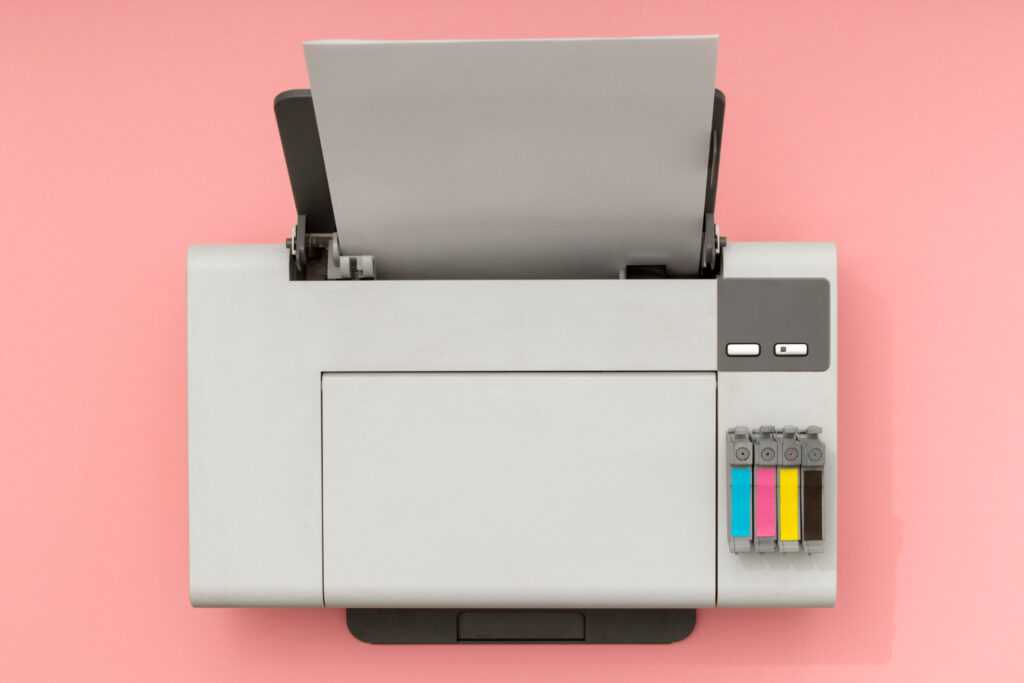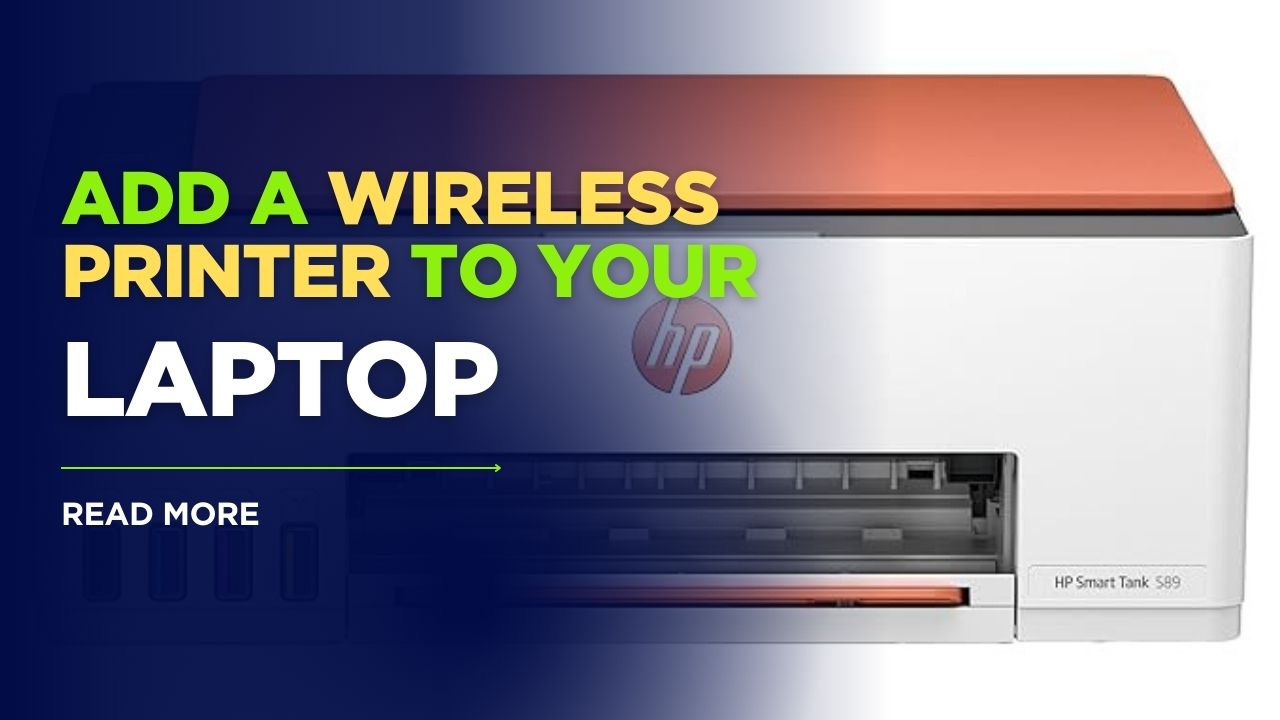Introduction
Learning how to add wireless printer to laptop systems can save you from the hassle of dealing with tangled cables and restricted printing locations. Wireless printing technology has revolutionized how we handle document processing, offering flexibility and convenience that traditional wired connections simply can’t match. Whether you’ve just purchased a new wireless printer or want to upgrade your existing setup, this comprehensive guide will walk you through every step of the connection process across different operating systems. With the right approach, you’ll be printing wirelessly from your laptop in no time, regardless of your technical expertise.
What Is Wireless Printing?
Wireless printing refers to the technology that allows you to send documents from your laptop to your printer without using physical cables. Instead of a direct USB connection, wireless printing relies on your home or office Wi-Fi network or other wireless protocols to establish communication between devices.
The primary wireless printing technologies include:
- Wi-Fi Direct: Enables direct printer-to-laptop communication without requiring a router
- Standard Wi-Fi: Uses your existing wireless network to connect devices
- Bluetooth: Provides short-range wireless connectivity between compatible devices
- Cloud Printing: Allows printing through internet-based services from anywhere
Modern wireless printers typically support multiple connection methods, giving you flexibility based on your specific needs. When you add wireless printer to laptop devices, you’re essentially teaching these two pieces of hardware to recognize and communicate with each other over your chosen wireless protocol.
The benefits of wireless printing extend beyond eliminating cables. This technology enables printing from multiple devices, placement flexibility (printer doesn’t need to be next to your laptop), and even printing from different rooms or remote locations when using cloud services.
6 Steps to Add Wireless Printer to Laptop

1. Prepare Your Wireless Printer
Before attempting to connect your laptop to your printer, ensure your printer is properly set up:
- Unpack your printer and remove all packaging materials, protective tape, and inserts
- Install ink cartridges or toner as instructed in the printer manual
- Load paper into the appropriate tray
- Power on the printer by connecting it to an electrical outlet and pressing the power button
- Wait for the printer to complete its initialization process (this may include printhead alignment or other startup procedures)
Most importantly, ensure your wireless printer is connected to your Wi-Fi network. This typically involves:
- Accessing the printer’s control panel
- Navigating to network or wireless settings
- Selecting your Wi-Fi network name (SSID)
- Entering your network password
- Waiting for confirmation of successful connection
Some modern printers feature WPS (Wi-Fi Protected Setup) buttons that simplify this process. Check your printer’s manual for specific instructions related to your model.
2. Connect Printer to Laptop on Windows 10/11
Windows operating systems provide a straightforward process to add wireless printer to laptop devices:
- Ensure your laptop is connected to the same Wi-Fi network as your printer
- Click the Windows Start button
- Go to Settings (gear icon)
- Select “Devices” (Windows 10) or “Bluetooth & devices” (Windows 11)
- Click on “Printers & scanners”
- Select “Add a printer or scanner”
- Wait while Windows searches for available printers on your network
- When your printer appears in the list, click on it and select “Add device”
- Windows will automatically download and install the necessary drivers
If Windows doesn’t automatically find your printer, try the alternative method:
- Click “The printer that I want isn’t listed”
- Select “Add a printer using a TCP/IP address or hostname”
- Enter your printer’s IP address (you can usually find this in your printer’s network settings menu)
- Follow the on-screen instructions to complete setup
3. Connect Printer to Laptop on macOS
Apple makes it relatively simple to add wireless printer to laptop systems running macOS:
- Ensure your Mac is connected to the same Wi-Fi network as your printer
- Click the Apple menu in the top-left corner
- Select “System Preferences” (or “System Settings” in newer versions)
- Click “Printers & Scanners”
- Click the “+” button below the list of printers
- Your wireless printer should appear in the list of available printers
- Select your printer and click “Add”
- Wait for macOS to download and install the necessary drivers
If your printer doesn’t appear automatically, you can try adding it manually:
- Click the “+” button
- Click the “IP” tab
- Enter your printer’s IP address
- Select the protocol (typically “AirPrint” or “IPP”)
- Click “Add”
4. Use Printer Manufacturer Software
Most printer manufacturers offer dedicated software that can simplify the process to add wireless printer to laptop systems:
- Visit the manufacturer’s website (HP, Canon, Epson, Brother, etc.)
- Navigate to the support or downloads section
- Enter your printer model
- Download the recommended software package for your operating system
- Run the installer on your laptop
- Follow the guided setup process, which typically includes:
- Accepting license agreements
- Selecting connection type (choose wireless)
- Finding your printer on the network
- Installing necessary drivers
- Testing the connection
Manufacturer software often provides additional features beyond basic printing, such as:
- Scan-to-computer functionality
- Printer maintenance tools
- Ink or toner level monitoring
- Custom print quality settings
5. Connect Using WPS (Wi-Fi Protected Setup)
For printers and routers that support it, WPS offers perhaps the simplest way to add wireless printer to laptop systems:
- Locate the WPS button on your wireless router (usually labeled with a symbol of two arrows in a circular pattern)
- Press and hold the WPS button on your printer (check your manual for its location)
- Within 2 minutes, press the WPS button on your router
- Wait for the connection to establish (usually indicated by a steady wireless light on your printer)
- Follow steps from method 2 or 3 above to add the now-networked printer to your laptop
This method bypasses the need to enter Wi-Fi passwords manually and can save time during setup.
6. Set Up Mobile Printing Options
Once you’ve completed the basic setup to add wireless printer to laptop devices, consider extending functionality to mobile devices:
- Download your printer manufacturer’s mobile app on your smartphone or tablet
- Ensure your mobile device is on the same Wi-Fi network as your printer
- Open the app and follow instructions to connect to your printer
- Test the connection by printing a test page
Many printers also support:
- Apple AirPrint for iOS devices
- Mopria Print Service for Android
- Email-to-print functionality where your printer has its own email address

Additional Tools for Wireless Printer Management
To enhance your wireless printing experience after you add wireless printer to laptop devices, consider these useful tools:
Printer Management Software: Most manufacturers offer comprehensive management applications that go beyond basic setup. These programs allow you to:
- Monitor ink/toner levels
- Schedule maintenance tasks
- Update firmware
- Customize print settings
- Troubleshoot connection issues
Cloud Printing Services: Services like Google Cloud Print (now discontinued, but alternatives exist) and manufacturer-specific cloud solutions allow you to print from anywhere with internet access.
Print Server Devices: If your printer lacks built-in wireless capabilities, dedicated print server devices can convert any USB printer into a network-accessible one.
Mobile Printing Apps: Beyond manufacturer apps, third-party solutions like PrinterShare or Printer Pro let you print from mobile devices to almost any printer on your network.
Network Analyzer Tools: Applications like Fing or Network Analyzer can help identify your printer’s IP address and troubleshoot connectivity issues on your home network.
These tools complement your basic setup and provide advanced options for managing your wireless printing environment more effectively.
Common Problems and Troubleshooting
Even after you successfully add wireless printer to laptop systems, you might encounter these common issues:
Printer Not Found During Setup
If your laptop can’t discover your wireless printer:
- Ensure both devices are connected to the same Wi-Fi network
- Temporarily disable any VPN services on your laptop
- Restart your router, printer, and laptop
- Check if your printer has an Ethernet connection option and try that temporarily
- Verify your printer’s wireless function is enabled (some have a dedicated wireless on/off button)
Connection Drops Frequently
For unstable wireless printer connections:
- Move your printer closer to your Wi-Fi router
- Check for interference from other electronic devices
- Update your printer’s firmware through the manufacturer’s website
- Consider using a Wi-Fi range extender if distance is an issue
- Switch your router to a less congested channel
- For dual-band routers, ensure both devices use the same frequency band (2.4GHz or 5GHz)
Print Jobs Stuck in Queue
When documents won’t print despite successful connection:
- Open your printer queue (via Control Panel on Windows or Printer settings on Mac)
- Cancel all pending jobs
- Restart the print spooler service (Windows) or printing system (Mac)
- Turn your printer off and back on
- Send a new test print job
Driver Compatibility Issues
If you receive driver-related error messages:
- Uninstall current printer drivers completely
- Download the latest drivers directly from the manufacturer
- For older printers, look for legacy drivers or use generic PCL/PostScript drivers
- Check for operating system compatibility (some older printers may not support Windows 11 or newer macOS versions)
Frequently Asked Questions
Do I need to install drivers after connecting my wireless printer?
In many cases, modern operating systems will automatically download and install basic drivers when you add the printer. However, for full functionality (scanning, advanced print options, maintenance tools), it’s recommended to install the complete software package from the manufacturer’s website.
Why does my computer see my wireless printer but won’t print?
This often indicates a driver problem or print spooler issue. Try updating your printer drivers, restarting the print spooler service, or checking for error messages on your printer’s display panel. Also ensure you have permission to use the printer if it’s on a managed network.
Can I connect my wireless printer without a router?
Yes, many modern wireless printers support direct connection methods like Wi-Fi Direct or Bluetooth. These allow your laptop to connect directly to the printer without going through a router, though setup steps vary by printer model.
How do I find my wireless printer’s IP address?
Most printers allow you to print a network configuration or status page directly from the control panel menu. This page will display the current IP address. Alternatively, you can check your router’s connected devices list or use network scanner tools on your laptop.
Conclusion
Learning how to add wireless printer to laptop systems opens up a world of convenient printing possibilities. By following the step-by-step methods outlined in this guide, you should be able to successfully connect your devices regardless of your operating system or printer brand. Remember that wireless printing technology continues to evolve, with manufacturers regularly improving connection methods and adding new features. If you encounter persistent issues, don’t hesitate to consult your printer’s manual or contact the manufacturer’s support team for model-specific guidance. With your wireless printer properly connected, you can enjoy the freedom of printing from anywhere in your home or office, enhancing your productivity and eliminating the constraints of physical cables.





Recent Comments